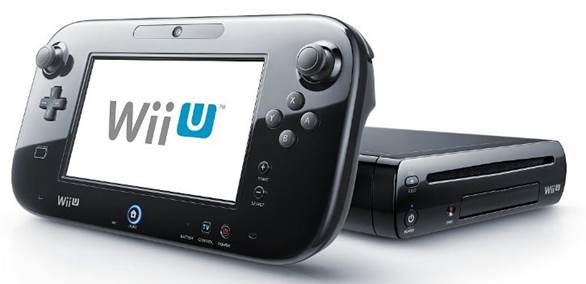We talk about the Nintendo Wii U and
how it's failed to ignite the interest of garners and developers alike
When Nintendo launched the Wii in late
2006, the revolutionary control system and the track record of the company
behind it propelled the console to one of the most successful technology
launches ever.
The success of the Wii altered the gaming
strategies of both Sony and Microsoft, with each extending their products with
their own special controllers. However, although casual garners loved the
simplicity of the Wii system and the wealth of software titles, the console was
criticized for not supporting blossoming HD TV standards.
Nintendo then sent mixed messages through
various senior people, sometimes suggesting it was developing a HD version of
the Wii and other times that it wasn't. Eventually, after six years of the Wii,
Nintendo finally released the replacement technology that most industry
watchers had expected three years earlier: the Wii U.

Eventually,
after six years of the Wii, Nintendo finally released the replacement
technology that most industry watchers had expected three years earlier: the
Wii U.
However, while it addressed the need for HD
video, it also introduced the idea of a second display on the controller, which
meant that while the Wii U was backwardly compatible with the Wii, titles
needed to be specifically designed to make use of the GamePad.
Initially it sold well. Not as impressively
as the Wii did, but solid sales. Since then, though, the shine has dramatically
gone off the Wii U as Nintendo failed not only to connect with its customers
but also its software developers.
Worrying Signs
Before talking about the specific
performance of the Wii U, it's worth noting that while over the past decade
both Sony and Microsoft have thrown billions away in losses with their console
divisions, Nintendo has made money.
Well, it did until the disastrous 2011/12
financial year, when the company lost money for the first time in its history.
In April, it released its 2012/13 figures, and while it didn't actually post a
full loss, it did post an operating loss, which means it spent more than it
accrued. The numbers were rebalanced slightly by good fiscal management - i.e.
currency movement and investments.
The best story it had to report was the
3DS, which in this year delivered 31.09 million sales, and more than 95 million
software purchases. The Wii U didn't make that grade, posting a feeble 3.45
million units. The Nintendo prediction for this point was 5.5 million units,
which it presumably made lower than it really expected, so it could better that
target.
For these machines, 13.42 million software
sales were made, although it's unclear if these include online mini- titles and
those games that work on both the Wii and the Wii U. If the latter is included,
considering that there are 100 million Wiis in circulation worldwide, that's an
incredibly disappointing software haul.

The
Wii U didn't make that grade, posting a feeble 3.45 million units.
It's especially worrying, considering the
start the console had, shifting the whole 400,000 launch production units for
the USA in the first week and 40,000 UK models in the first weekend. From
there, the sales that started so well didn't just plateau, as the months and
weeks from the launch went on - they effectively fell off a cliff. This wasn't
a region specific phenomenon either; globally the Wii U just stopped selling.
Although not officially confirmed, it's
believed that the Wii U sold only 40,000 machines in the USA in April 2013,
down on all the previous months to a new low.
It could be argued that the American
consumer is easily distracted, but that decline was matched by an even more
dramatic one in Nintendo's traditional stronghold, Japan.
Sales figures are published every week
there, and in the week ending May 12th only 7,000 Wii Us were sold in the whole
of Japan. That's only a thousand more than the original PSP (that they still
sell there) achieved, and was dwarfed by the 12,000 units that both the PS3 and
PS Vita moved that same week.

The
PS3
Meanwhile in the USA, major console
retailer GameStop announced that it would withdraw the 8GB white Wii U from
sale permanently, though it'll continue to sell the black 32GB Premium model.
With the Wii U being only six months old,
many industry pundits voiced concern that if the console couldn't succeed
against the old Xbox 360 and PS3, it was hardly likely to do so against the new
consoles that both its competitors intend to launch this year.